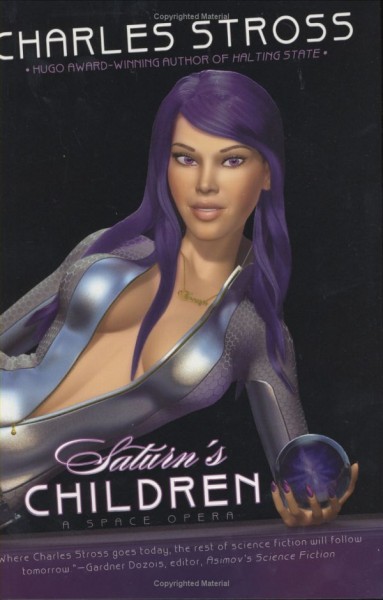If you haven’t yet read any of the “Laundry” books by Charles Stross, you really are missing out on a treat. The Jennifer Morgue was the second in the series and Charles has a blog post up about how the book came to be written:
All stories have several seeds. In the case of “The Jennifer Morgue”, the first seed was the surprising success of “The Atrocity Archives”. The novel my agent initially thought was unsaleable sold to Golden Gryphon, a small but respectable Lovecraftian publisher in the United States. It went gold, going into reprint and becoming their second-best selling title at the time. Then, to everyone’s surprise, the additional novella I wrote for the book (“The Concrete Jungle”) made the shortlist for the Hugo award in 2005. This was a stunning surprise. GG had only sold around 3000 copies of the book; the other novellas on the shortlist had all appeared in magazines or anthologies with four to ten times the number of copies sold! After some hurried email consultation, Gary and Marty at GG agreed to let me put the whole novella on the web, to make it more readily available to the Hugo voters. I don’t know if that’s what did the trick, or if there were additional home-mover effects from the Worldcon in 2005 being held in Glasgow (thus bringing more British voters in than normal) but at the end of August that year I became the dazed and surprised owner of a very shiny trophy.
(And the performance anxiety that had been haunting me for years—”I’m not a real writer, I’m just winging this”—went away for a while.)
But anyway. This success coincided with a French publisher making an offer for translation rights to “The Atrocity Archives”, which in turn got my agent’s attention. She proposed a sequel, and James Bond was so obvious that I don’t think I even considered any alternatives. It would have to be the Movie Bond franchise, for most people these days don’t grow up on the original Ian Fleming novels (the way I did); the humour would come from the incongruity of Bob Howard in James Bond’s shoes. We decided to auction the new book, along with paperback rights to “The Atrocity Archives”, and ended up cutting a deal whereby Golden Gryphon would publish “The Jennifer Morgue” in hardcover while Ace rolled “The Atrocity Archives” in trade paperback, and eventually in mass market. Which then left me pondering what to write … because every Bond movie (or novel) needs a Bond-sized plot device, doesn’t it?
By this time we were into late October 2005. One evening, we were eating a Chinese take-away in front of the TV, watching a documentary on the Discovery Channel about one of the most bizarre CIA projects to happen during the Cold War — Project Azorian (better, but mistakenly, known to the public as “Operation Jennifer”). Seriously, if you don’t know about it, go follow that link right now; it’s about how the CIA enlisted Howard Hughes to help them build a 63,000 ton fake deep-see mining ship, the Glomar Challenger, as cover for a deep-sea grapple that would descend 4,900 metres and raise the hull of a shipwrecked Soviet nuclear missile submarine, the K-129. (Project Azorian was so James Bond that the engineering crew working on the ship were cracking jokes about the bald guy stroking the white cat in his seat on the bridge. How post-modern can you go?)




